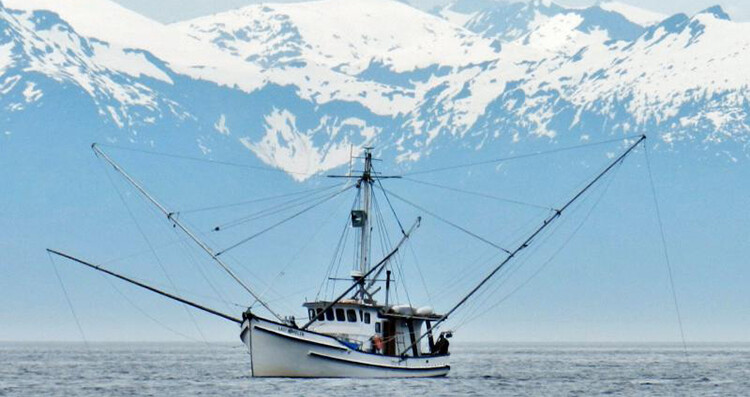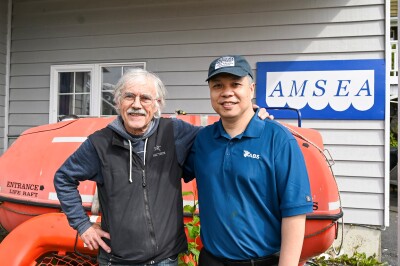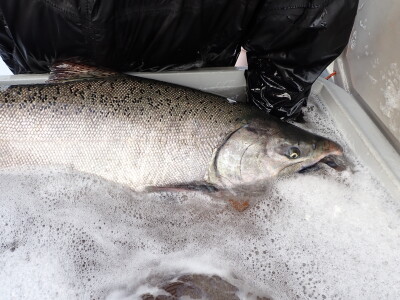Alaska fishery advocates are speaking out against a lawsuit filed last week by the Wild Fish Conservancy (WFC), arguing that the legal action will hinder — not help — efforts to protect the state’s salmon populations.
The lawsuit, filed on May 8 against the National Marine Fisheries Service (NMFS), informally known as NOAA Fisheries, seeks to compel faster action on a petition to list Gulf of Alaska Chinook — also known as king salmon — under the Endangered Species Act (ESA).
On January 11, 2024, WFC petitioned NOAA to grant ESA protections to Chinook salmon from rivers flowing into the Gulf of Alaska. NOAA issued a positive 90-day finding on May 24, confirming the petition presented substantial information that protections may be warranted, triggering a year-long review and public input process. Under the ESA, NOAA had until January 11, 2025, to decide whether Gulf of Alaska Chinook should be listed as threatened or endangered. Now, WFS is suing NOAA for missing this deadline, citing further delays in protections for declining Chinook populations at risk of extinction.
“It should not take a lawsuit to make the federal government uphold its legal responsibility, but with the crisis facing Alaskan Chinook, we are out of time and options,” said Emma Helverson, WFC's executive director. “The Endangered Species Act sets clear deadlines for a reason, to evaluate the risk of extinction and trigger action while recovery is still possible. By ignoring those deadlines, NOAA isn’t just breaking the law — it’s perpetuating the collapse of Alaskan Chinook and threatening the ecosystems and communities that depend on them.”
But fishermen and conservation leaders in Alaska say the lawsuit is based on misinformation and distracts from effective, science-driven conservation work.
“The National Marine Fisheries Service is conducting a thorough and science-based status review of Alaska’s salmon stocks in response to the ESA petition filed by this litigious group,” said Linda Behnken, executive director of the Alaska Longline Fishermen’s Association (ALFA). “Since WFC does not work in Alaska, it may not be aware that Alaska is exceptionally large with over 19,000 rivers or streams that support salmon. An accurate ESA status review takes time — especially when NMFS is dealing with budget cuts and staff reductions imposed by the current administration. Filing yet another lawsuit will only divert NMFS staff from working on the status review.”
Alaska is the only U.S. state with a constitutional mandate to manage fisheries for sustained yield, a point local experts say sets it apart in salmon conservation. State fishery management restricts harvests to ensure sufficient spawning stock for the future, an approach widely supported by Alaska’s fishing communities.
“Salmon are under pressure from climate change, ocean acidification, and habitat damage in the lower 48,” said Jeff Farvour, an ALFA board member. “Salmon habitat in Alaska is largely intact, but some salmon that summer off Alaska are suffering from habitat damage, including dams in the Columbia River Basin and industrial pollutants and urbanization in Wild Fish Conservancy’s own backyard — Puget Sound. Working with Alaska’s fishermen and local communities to address these bigger challenges to salmon would demonstrate a real commitment to the future of salmon.”
Conservationists also challenged the scientific integrity of WFC’s petition to list the Gulf of Alaska Chinook as endangered, citing insufficient data and a misunderstanding of Alaska’s complex salmon management systems.
“Protecting Alaska’s Chinook salmon is essential, but it requires science-driven solutions and meaningful conservation efforts, not misinformed lawsuits,” said Michelle Stratton, Alaska Marine Conservation Council executive director and fisheries scientist. “The Wild Fish Conservancy’s petition to list Gulf of Alaska Chinook as endangered is riddled with inaccuracies and insufficient research, failing to capture the full scope of salmon management in Alaska and the specific, hyperlocal needs of these salmon populations.”
Stratton emphasized that instead of investing in litigation, conservation groups should support efforts already underway in the state, such as those that prioritize habitat restoration, scientific monitoring, and targeted recovery programs.







